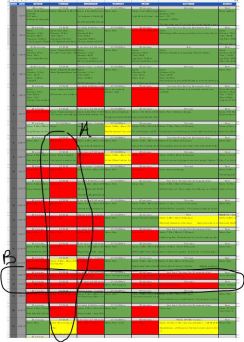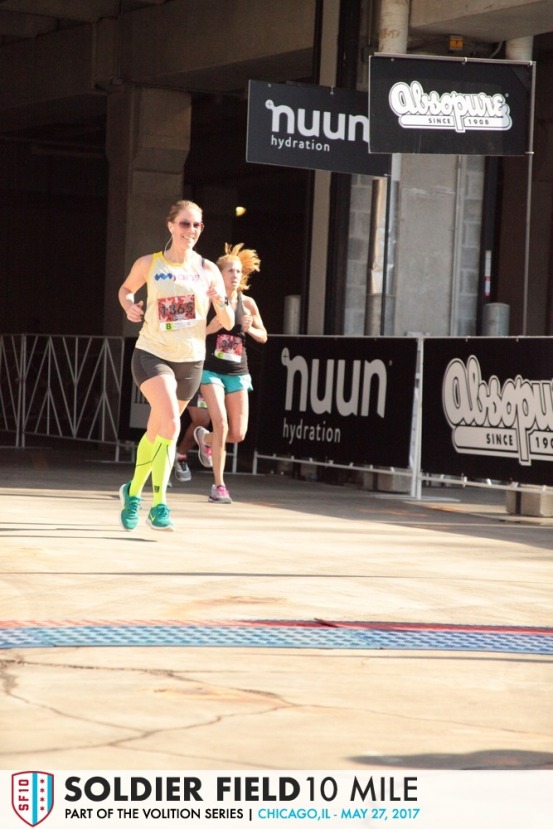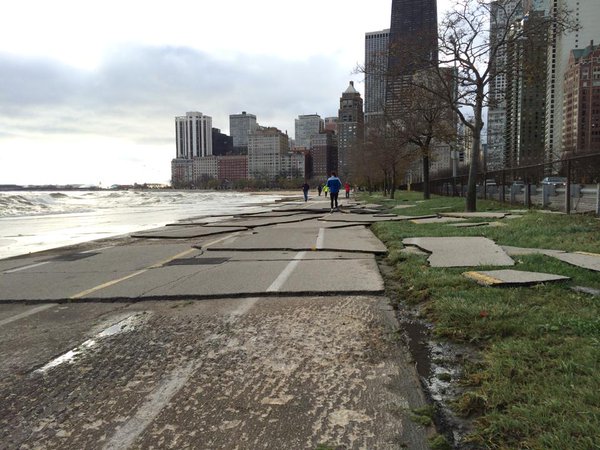
In Chicago, the public path that snakes along Lake Michigan (“lake front path,” “lake front trail” or “the lake” — ask a Chicagoan what it’s actually called and you’ll get a million answers) is made of cement. At night, or with storms, the tide pulls the water up onto the path, sometimes violently. In the winter, the path is covered in salt, a futile attempt to stave off the layers of ice that form. When the temperature rises, the pavement groans quietly as large cracks and holes form. Sheets of cement are wretched from their places and carried into the water where the exposure is greatest. When the Spring arrives, the city gets to work repairing the Winter’s damage.
I used to love running along the lake in the winter. In my first year of law school, seeking an escape from the pressure of exams, I would throw on a ratty sweatshirt and run the same 3mi out-and-back, relishing in the hot sweat as it immediately cooled against my skin in the icy air. These days, I’m more pragmatic – the darkness, combined with the potential for black ice or stranger danger, keep me on the couch or the treadmill until the nights get shorter and the weather gets warmer. The light from the sun tends to shine on things that were able to hide under the cloak of Winter, and the cracks in the pavement are no different than the weaknesses exposed in a hibernating runner.

While I attempted to run Chicago in 2015, my foot injury sidelined me about 6 weeks in. Now, for the first time since 2013, I’m determined to tackle the marathon distance and the training that accompanies it. I made the decision last Fall to return to Twin Cities in October, and knowing my foot injury basically left me at square one, I knew that I needed to do less hibernating and more treadmill miles this winter to build up a strong base and facilitate the miles required for finishing a marathon strong. (Let’s be real. I’m prideful and stubborn, and if I’m going to miss out on happy hours to train for a comeback marathon, I’m going to be ambitious with my goals.)
I was able to stick to my base training pretty well in the beginning, even incorporating some cycling into my routine thanks to a Flywheel gift card I had won in a charity raffle a while back. When all was said and done, I completed about 70% of my intended runs (and about half of those missed runs were due to sickness), but only about 40% of my cross-training (>1x/wk). I got a little tired of Flywheel, and was lazy about finding alternatives. Despite the consistency falling off a bit in the second half of training, my efforts recently culminated in a 10-mile race, which I completed in 1:28:XX (~8:49/mi), an 8-minute PR from my last effort (2012). I’m pretty thrilled with the result considering the soft training behind it.
There are still work to do, and plenty of cracks that I wasn’t great about filling in the last six months — hello, strength training. Now that I have some decent base training behind me, I’m excited to pivot to race-specific training and incorporate some of those must-have pieces of the puzzle. Here we go!


Great job at the SF10 and good luck with marathon training!
LikeLike
Thanks, Maggie! You as well! I’ve been enjoying your comeback 🙂
LikeLike
Awww 🙂 Me too
LikeLike
You look so happy and strong in your SF pic! I’m excited to follow your training and to read your (most excellent) writing again. 💕
LikeLike
Thanks, Erin! I was channeling you in the “grinning race pics” category. Excited to dig into the training and feel strong again!
LikeLike